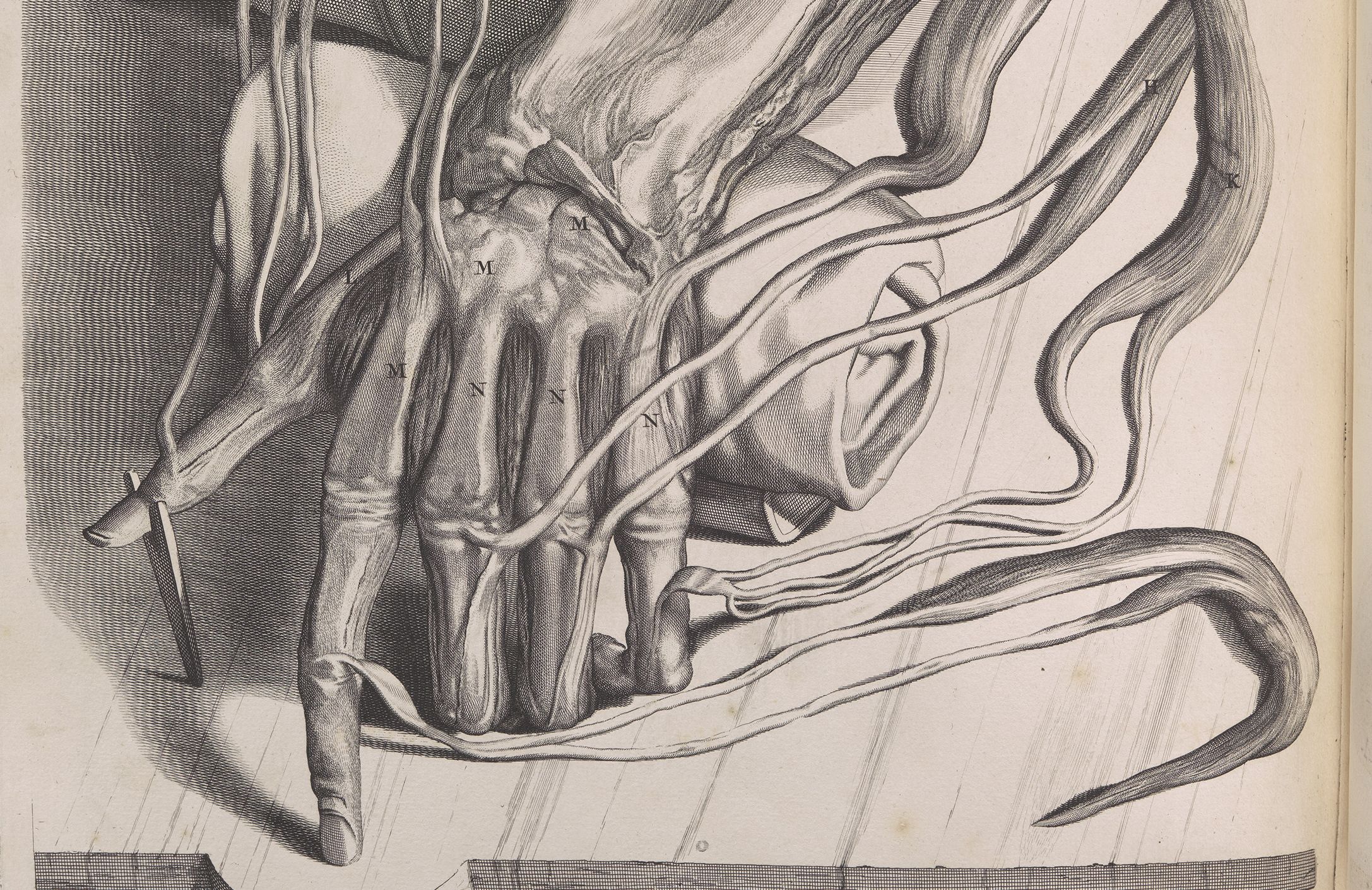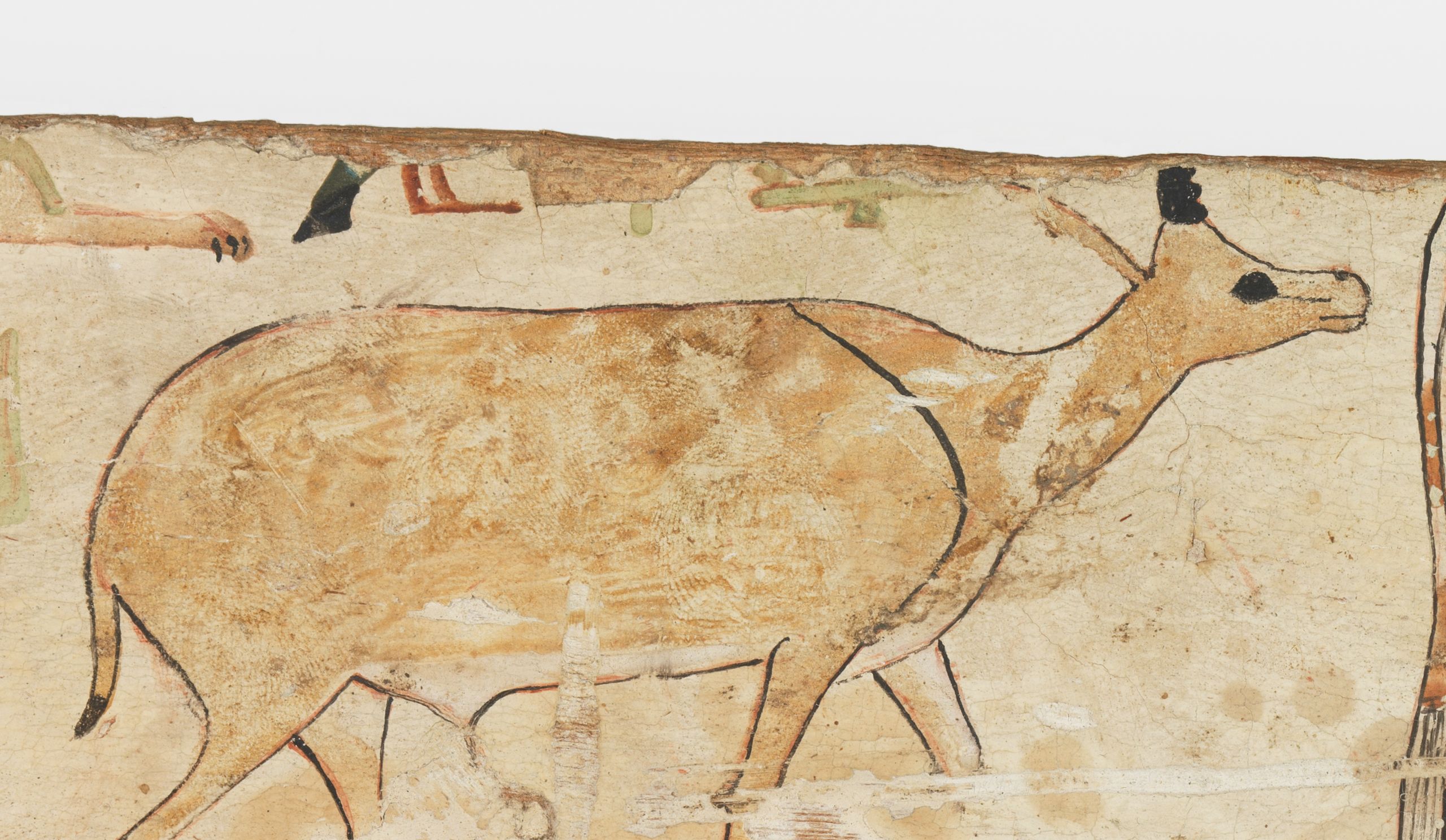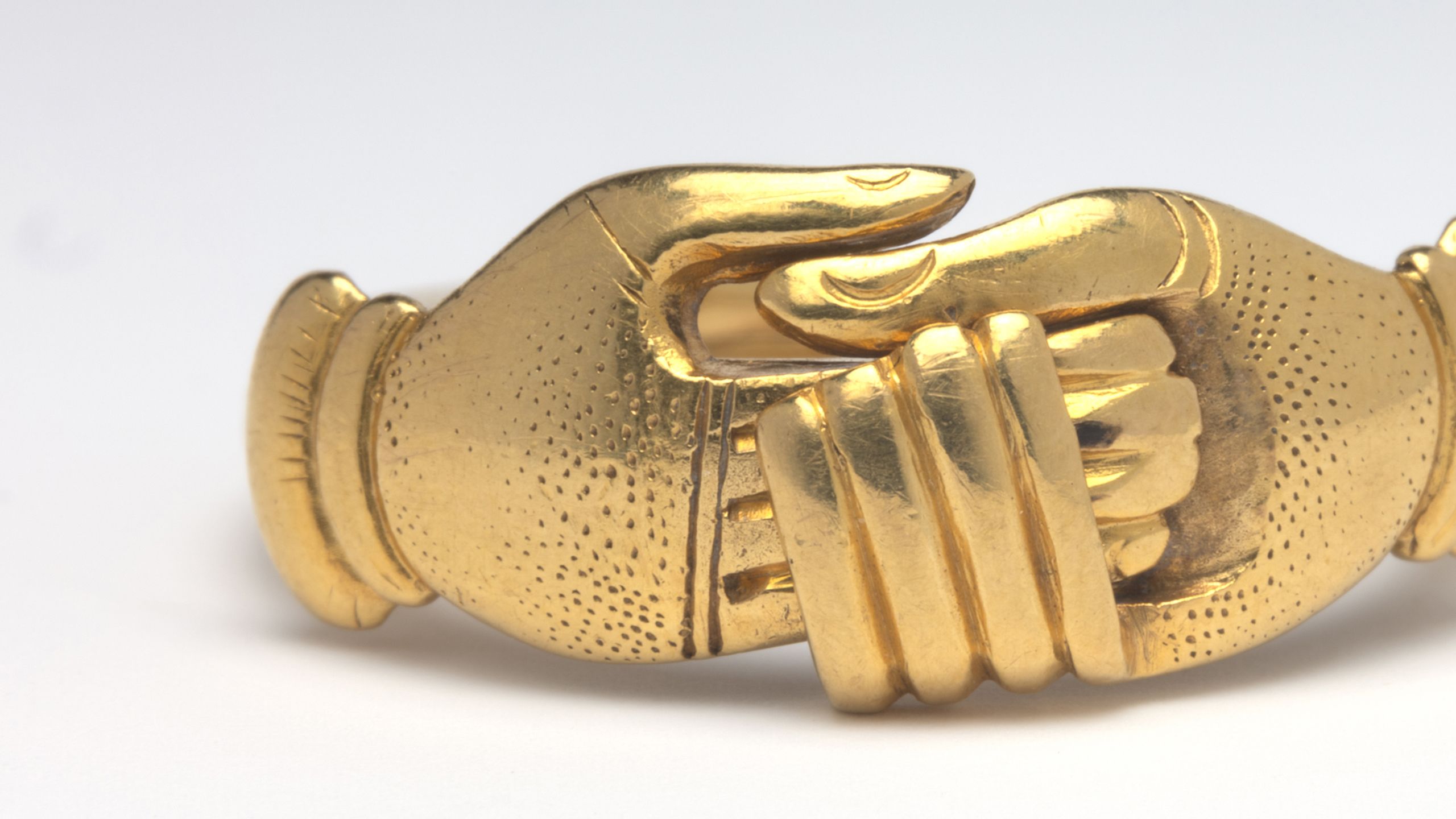The power of touch
As a major Fitzwilliam Museum exhibition explores human touch through 4,000 years of art, Cambridge researchers explain why this sense is so important in their own work.
![William Faithorne, Portrait of Valentine Greatrakes [detail]. Engraving on paper, 1666. Fitzwilliam Museum, Cambridge](https://www.cam.ac.uk/sites/www.cam.ac.uk/files/shorthand/224821/X4Hct47S8X/assets/rUFiTTx2sR/p-2384-r_1_202010_mfj22_dc1_horiz-crop-1972x1169.jpeg)
Hugs and museums shared something in common over much of the last year – they’ve been off-limits for millions of people. Finally, however, visitors to Cambridge’s Fitzwilliam Museum can enjoy art and human touch at the same time, albeit with some ongoing safety measures still in place.
The Human Touch: Making Art, Leaving Traces (18 May - 1 August 2021) offers an intimate artistic journey through the anatomical workings of touch, its creative force and its emotional power. The exhibition explores anatomy and skin; the relationship between the brain, hand and creativity; touch, desire and possession; ideological touch, reverence and iconoclasm, and much more.
Highlights range from an ancient Egyptian limestone sculpture of a brother and sister holding hands, to a 21st-century Mexican protest poster using handprints to condemn torture.
The curators, Elenor Ling and Dr Suzanne Reynolds, point out that “the events of 2020 have made us newly alive to both the value and the dangers of touch” and invite us “to stop taking touch for granted and reconnect with the tactile foundations of our lives.”
From robotics to mental health, you might be surprised how many other Cambridge researchers are also thinking about human touch. Here, just a few of them explain why this sense plays such a crucial role in their field.
Sam Hilton – Bioelectronics
“If you want to know how important touch is to humans, just ask someone who has lost it as a result of disease or injury. Hundreds of thousands of people in the UK live with nerve damage that affects their ability to gather sensory inputs from their environment, negatively impacting their physical and mental wellbeing.
“Our research asks how advances in micro-electronics can be exploited to bypass affected nerves entirely, wirelessly connecting implantable neuro-prosthetic devices in the brain and affected limbs. Interfacing living tissue with electronics may represent the future for restoring the sense of touch in those who can’t.”
Sam Hilton is a Research Assistant in the Bioelectronics Lab, Dept. of Engineering

Dr Vicky Leong – Early life bonding
“Affectionate caregiver touch plays a unique and vital role during early life. Consistent and warm experiences of affectionate touch stimulate healthy development of the infant’s body and mind. They promote maturation of the somatosensory, stress regulation and immune systems, improving psychosocial wellbeing and scaffolding learning about the social world.
“In the first hours of life, skin-to-skin contact establishes the mother-infant bond. This intimate connection is built moment-to-moment through mothers’ and infants’ instincts to caress, grasp, kiss and suck as they explore and return the other’s touch in a virtuous harmonious cycle of synchronicity.
“Touch may be the simplest and earliest way to convey to a child that she is safe and loved. In this sense touch lays the cornerstone for the first stable attachment bond, upon which all lifelong relationships are then built."
Dr Victoria Leong is Affiliated Lecturer at the Dept. of Psychology where she heads the Baby-LINC (Learning through Interpersonal Neural Communication) Lab

Liliana Janik - Prehistoric art
“Touch has become one of my basic tools for interpreting and understanding the past. The link between me and the person who created rock carvings, a figurine or a pot thousands of years ago, is tangible. I can feel the results of the process that made the ivory, clay or stone artefacts or imagery fit in my hand or being touched by my hand.
“Following 5000-year-old carvings by touching the rock surface, they become a landscape with hills where the hunt on skis is taking place.
“And holding one of the earliest figurines made by a woman around 30,000 years ago gives me the idea of her skill and creative process in creating self-portraiture in ivory.
“These are both instances where touch is not only a vital part of the inquiry, but also a way of reaching artists from the past and their creations.”
Dr Liliana Janik is Assistant Director of Research in the Dept. of Archaeology and a Fellow of Girton College

Morgan Healy – Playful learning
“Touch allows us to learn from, see and experience the world. In fact, touch is our very first sense to develop. Touch enables us, as young as just a few weeks old, to play in a world we don't yet understand and learn from it in a way that is evolutionarily beneficial.
“Research from developmental psychology demonstrates just this. When children touch an object as they play with others, this promotes a cascade of positive outcomes ranging from later language skills to improvements in coordination and fine motor skills.
“We could all do better to encourage children to touch and explore the world around them and in doing so, we can make their future just a little brighter.”
Morgan Healy is a doctoral researcher and Gates-Cambridge Scholar at Lucy Cavendish College and the PEDAL Lab (Play, Education, Learning and Development Lab), Faculty of Education
![Unknown artist, Dyad, Upper Egypt, limestone, 2494 BCE-2345 BCE, 5th-6th Dynasties [detail]. These figures represent Heti, an overseer of scribes, standing hand-in-hand with his sister, Khenut, daughter of Meresankh. Fitzwilliam Museum, Cambridge](https://www.cam.ac.uk/sites/www.cam.ac.uk/files/shorthand/224821/X4Hct47S8X/assets/8iKadmWzRy/e-62-1926_201607_dc1_horiz-2560x1440.jpeg)
Olivia Remes – Wellbeing
“Examining the links between human connection and mental health is one of the things I look at in my work on wellbeing, and touch is a fundamental component of this. When we touch another person, hug someone close to us, or simply give a friend a pat on the back, the benefits for our emotional health are significant.
“Touch helps people feel more connected and closer to one another, which can have important positive effects on our wellbeing. Even rats show benefits when they are touched by their mothers – or more specifically, in their case, when they are licked and groomed: they tend to be better equipped to handle stress when they grow up. Even for humans, physical contact may be a major factor that determines how well we cope with stress.
“If people need touch, but don’t get it, “skin hunger” may set in – the discrepancy between the amount of touch we need and what we actually get. Skin hunger has been felt by a number of people throughout this pandemic, and may have affected people’s wellbeing in various ways. It seems that touch is important for humans and animals alike and a stepping stone on the path to healthy development. Knowing this can help us take steps forward and consider how we might incorporate this in our interactions.”
Olivia's first book, The Instant Mood Fix: Emergency remedies to beat anxiety, panic or stress, was published in May 2021.
Dr Olivia Remes is a mental health researcher in the Dept. of Engineering
![Unknown artist, Visitation [detail]. Alabaster, 14th-century Spain. Fitzwilliam Museum, Cambridge](https://www.cam.ac.uk/sites/www.cam.ac.uk/files/shorthand/224821/X4Hct47S8X/assets/vHOEWhfMNA/m-2-1925_1_202006_mfj22_dc1_horiz-crop-2560x1551.jpeg)
Laura Davies – End of life care
“In his poem 'Break Break Break' Tennyson writes of longing for 'the touch of a vanished hand' and the anguish that he captures speaks precisely to the vital but bitter-sweet connection that human touch, between the living and the dying, enacts.
“Both a verb and a noun, touch is precious in end of life care because it cannot last, and is profound in its simplicity and yet wholeness of contact. Touch expresses what, for most of us, words cannot.
“This can be just as true of the kind of touch that comes with the practical business of caring for the dying person's body, as it is of the differently intimate act of holding their hand.”
Laura leads the research and public engagement project: 'A Good Death?'. Working with the Menagerie Theatre, the team created a short audio-drama based on one of the Fitzwilliam Museum's paintings that is, in large part, about touch: Poussin's 'Extreme Unction'. You can listen to the play, called 'A Look, A Wave', here
Dr Laura Davies is a King’s College Lecturer in Eighteenth-Century Literature

Tine Van Bortel – Mental health
“Touch is vital for human communication, social bonding, and overall health. Recent studies have shown the incredible emotional, physical and psycho-social health benefits we gain from touch.
“Touch is also the language and expression of compassion. The pandemic has brought that home to us – countless people could not say goodbye to loved-ones but health and care professionals sat with patients, holding their hand, touching and stroking their arm for comfort. Those kind and compassionate gestures meant the world to both patients and their families.
“Touch is not always experienced as something positive and not everyone appreciates touch in the same way. Whilst many people in our ‘Mental Health in the Pandemic’ study reported feeling ‘touch-deprived’, there were also a good number of people who reported being quite happy about not being touched unnecessarily or excessively by either extended family, friends, or colleagues at work. Some people also lived in abusive home situations where touch was experienced in a very negative way.
“It’s clear that the type of touch, the intention of the touch, the circumstances and context in which touch occurs, our socio-cultural background and biological make-up are all important in relation to how we experience touch.”
Professor Tine Van Bortel is Principle Investigator in Public Health & Wellbeing at Cambridge Public Health
![William Hogarth, Before [detail]. Oil on canvas, 1730-31. Fitzwilliam Museum, Cambridge](https://www.cam.ac.uk/sites/www.cam.ac.uk/files/shorthand/224821/X4Hct47S8X/assets/OoPif9B2kI/pd-11-1964_201112_adn21_dc1_horiz-crop4-2560x1784.jpeg)
Fumiya Iida - Bio-inspired robotics
“Robots today are severely handicapped in touching the physical world like humans. Robots are very powerful and useful when physical interactions with the environment are minimal, but become incompetent as soon as delicate touch is necessary.
“Human physical touch involves hundreds of sensory receptors detecting various conditions such as pressure, temperature and vibrations, which are also exquisitely controlled through muscle control in fingers, hands and arms.
“The complexity of human anatomy and sophistication of our sensory-motor control are still far beyond the reach of today’s technologies.
“In our lab, we take inspiration from human touch as we strive to develop more adaptive robots that are capable of many demanding and urgent tasks such as manual work in healthcare, agriculture and the domestic environment.”
Dr Fumiya Iida is Reader in Robotics in the Bio-Inspired Robotics Lab, Dept. of Engineering, and a Fellow of Corpus Christi College
![Marianne Raschig, Handprints of the artist George Grosz (1893-1959), sheet signed 30 April 1928 [detail]. Ink on paper. Katrin Bellinger Collection. Photograph © Matthew Hollow](https://www.cam.ac.uk/sites/www.cam.ac.uk/files/shorthand/224821/X4Hct47S8X/assets/uwnJvzZrT6/raschig_grosz-george-2560x1606.jpeg)

Short film offering a sneak peek of The Human Touch exhibition
Film detailing a collaboration between Giacomo Bufarini aka RUN, the Nelly Duff Gallery and the Fitzwilliam Museum for The Human Touch exhibition

